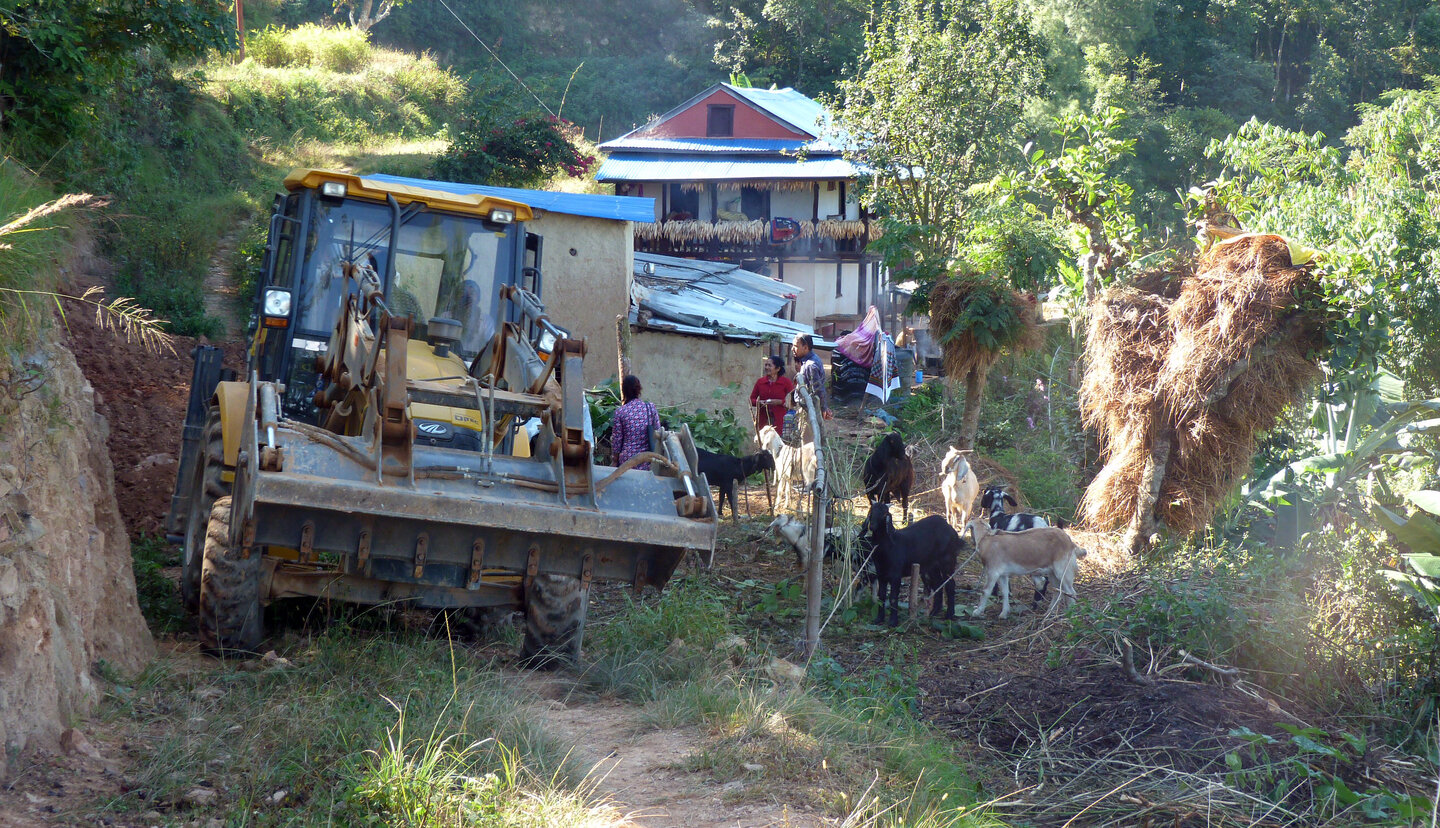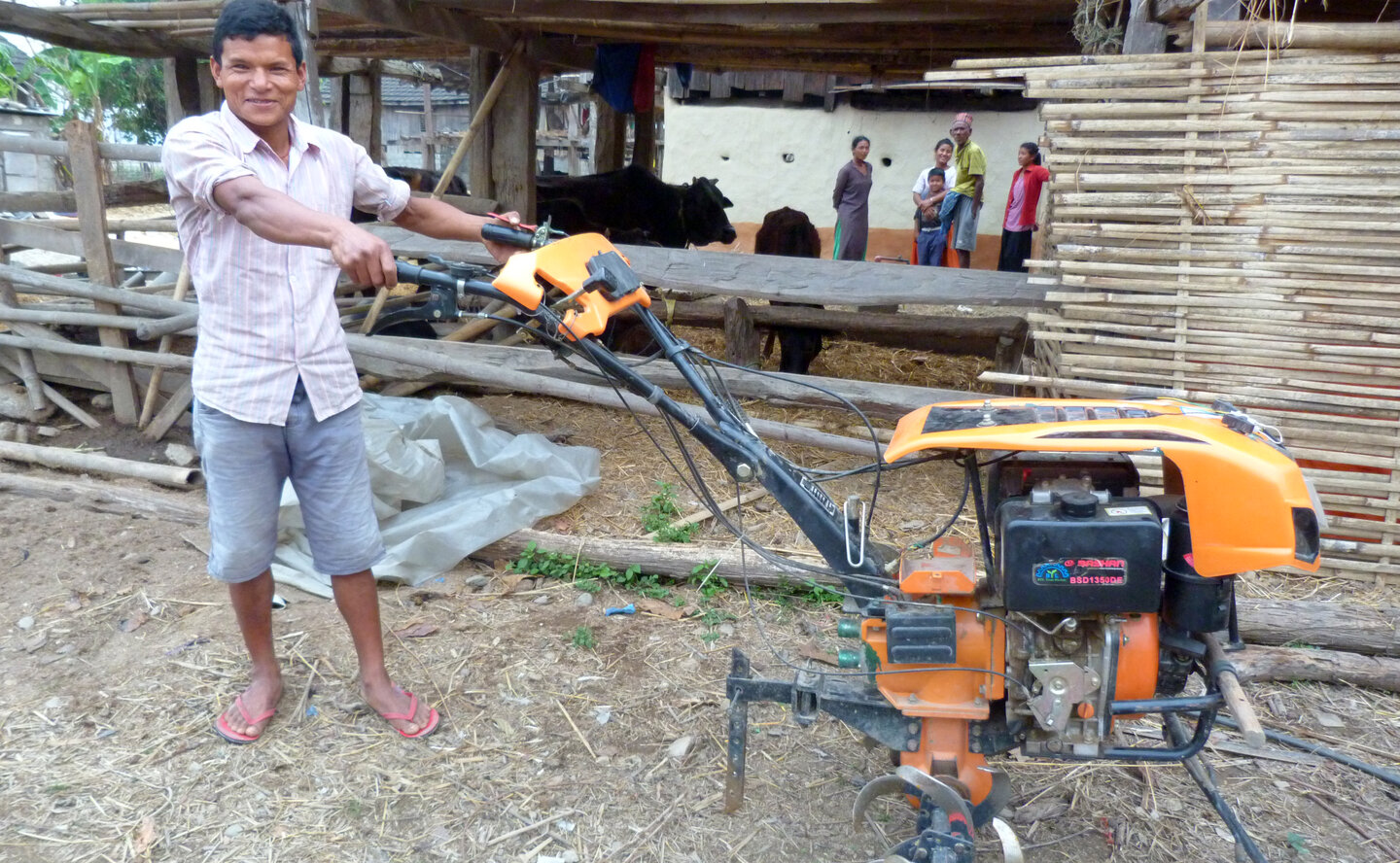Returning from a visit to village friends a few weekends ago on a long and bumpy bus ride, one of us was entrusted to oversee delivery of two large sacks. The sacks were destined for their Kathmandu-based daughters and were bulging with home-grown vegetables. As the bus reached the outskirts of the city, we halted with increasing regularity to unload passengers carrying similar items. This is a pattern repeated daily, by numerous buses, but represents a small trickle by comparison with commercial flows of produce to urban areas. Towns in the hills are growing rapidly and larger urban areas are expanding; the urbanization of Nepal’s population is a fact (if difficult to put a figure upon). Rural-urban linkages also grow steadily stronger, and it is clear to even the casual observer that in many parts of the hills, farming - and village life overall - is changing quite radically.
The attractions of a life free from farming
According to a World Bank 2019 development update, Nepal’s agriculture is doing well - estimated to grow by 5% percent this year “due to good monsoons, increased commercialization, availability of fertilizers and seeds, and improved irrigation facilities”.
This positive assessment for the country overall belies the fact that traditional subsistence agriculture in the hills still gives low returns – and is exhausting. Who chooses to trudge up and down steep slopes with heavy loads, and to spend long hours of back-breaking sowing, weeding, harvesting and threshing, if other options are available? Most young Nepalese hope for a different future. Either they try their chances of an urban life, or they join the regular flow of foreign labor migrants - despite the potential risks entailed. Often it is young men who go, leaving young women to juggle the demands of family and farm. Or all the youth depart, leaving the older generation behind – as is the case of the friends cited above, none of whose children have stayed in the village. Young Nepalese are not alone in this; in many countries with predominately rural economies, farming is viewed as a low status, poorly remunerative livelihood. The case of Nepal’s hills is just particularly stark.
Given the drudgery entailed, some argue that hill agriculture has no future. This seems an overly radical prognosis – but what can be seen is a changing form of hill agriculture, spurred by many factors of which three stand out: roads, local labor, and climate change.
Rural roads
The number one development priority of people living in isolated areas tends to be a road – a demand which, since 2017, newly formed municipalities have been seeking to fulfill. Often the roads constructed are poorly surveyed, bulldozed dirt tracks that cause extensive environmental degradation. Nevertheless, access to rural areas is improving.

As a result, agricultural inputs can come in, and products can be transported out, with far greater ease than in the past. There is real potential for commercial production far beyond that possible even 10 years ago; the village mentioned above is typical in this respect, having gained road access only a few years ago.
Lack of local labor
Labor migration means that there are fewer people, especially young men, available to work in the fields. An increasing area of marginal land is being left uncultivated, or underutilized. Agricultural techniques and cropping patterns must be - and are being - adapted to make farming less physically grueling and maximize production from smaller areas. The introduction of vegetable cultivation and other high value crops, the use of polytunnels (especially for winter cropping), power-tillers, drip irrigation, the better management of farmyard manure from stall-fed livestock are just some examples.
Climate change
According to the Intergovernmental Panel on Climate Change, IPCC, temperatures and rainfall in the Himalaya are increasing – although the number of rainy days is decreasing. Briefer periods of heavier rain mean an increased risk of landslides and soil erosion, whilst rising temperatures and humidity can encourage new forms of pests and diseases and alter the suitability of different crops and crop varieties in any given location. There is a clear need to adapt to these changing circumstances – but whilst many have negative consequences, there are also positive ones, with for example certain crops becoming possible in areas in that were previously out of range as temperatures rise.
Bringing the younger generation back to farming
The high rate of labor migration out of the hills represents an opportunity as well as a challenge – in that the migrants send back remittances that can be used to adapt farming techniques and cropping patterns. If successful in their foreign employment, they also return with capital to invest. Rather than aspiring to city life, how can they be persuaded to invest in farming?

Supporting agriculture in the hills that is commercially attractive, adapted to climate change, and encourages investment by returnee migrants, are key activities of the Nepal Agricultural Services Development Program, NASDP or Prayas. This is a joint program of the Government of Nepal and the Swiss Agency for Development and Cooperation, implemented with technical support from Helvetas. In occasional future blogs, we will describe examples of returnee migrants becoming commercially successful hill farmers – and draw lessons from their experiences.



